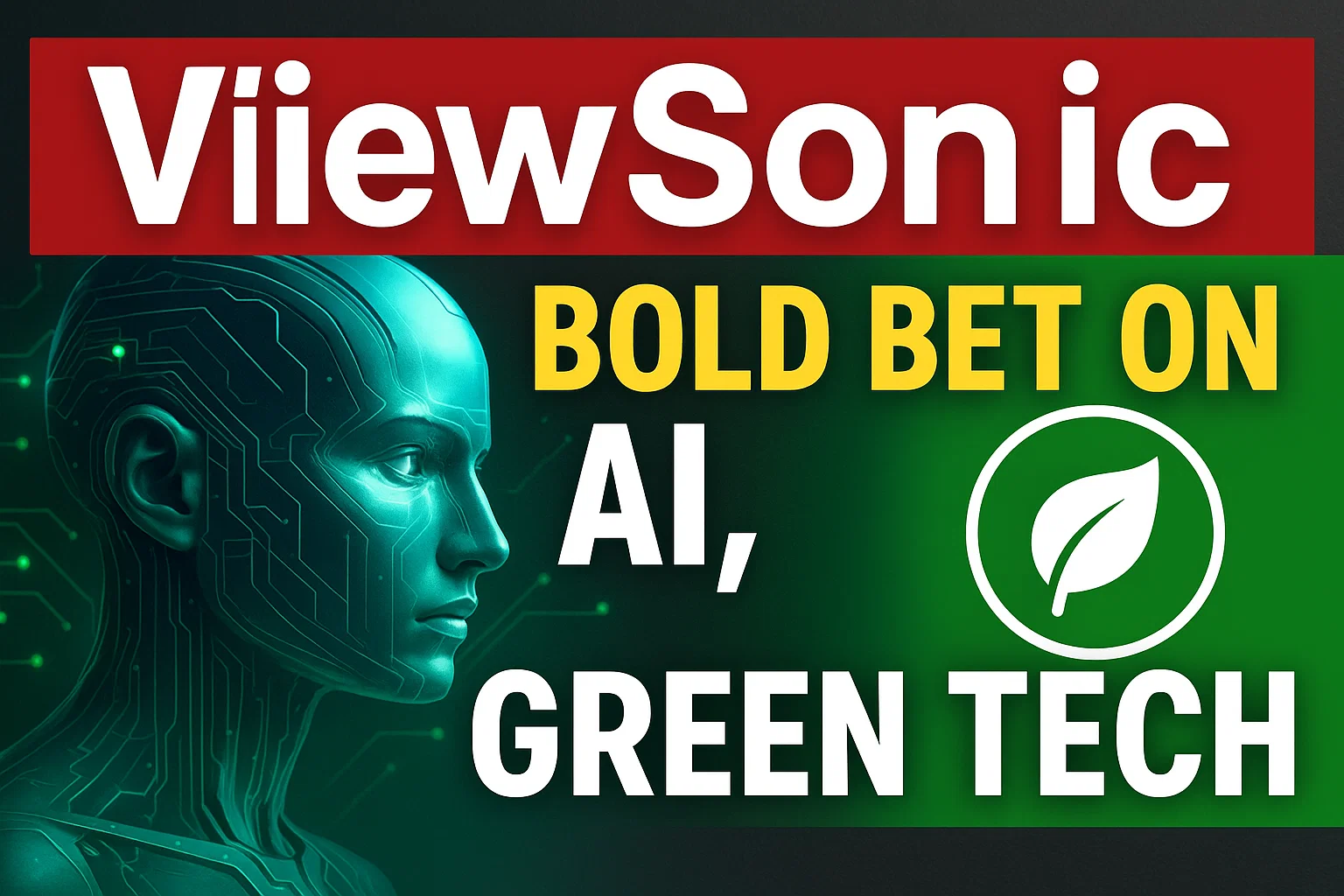ViewSonic Commits to Net Zero With Recyclable Displays and AI Powered Ecosystems

ViewSonic is positioning itself at the intersection of AI innovation, sustainability, and immersive display technology as it maps out its long-term vision for the audiovisual (AV) and ICT industries. The company, best known for its monitors and projectors, is now reshaping itself into a solutions provider built around eco-design, AI-driven software, and large-scale immersive displays.
This shift is not just about keeping pace with competitors. It’s about embedding climate commitments, cross-device ecosystems, and intelligent services into every product and partnership — a strategy that aligns with how the AV sector itself is evolving.
A Net Zero Roadmap With Tangible Milestones
Sustainability is no longer a side project for ViewSonic. In 2024, its climate targets were validated by the Science Based Targets initiative (SBTi), confirming a commitment to cut greenhouse gas emissions by 42% by 2030 and achieve net zero by 2050.
This ambition is being backed by hard numbers. The company’s 2025 ESG report highlights:
- 97% recyclable packaging across product lines, phasing out plastics in favor of FSC-certified materials.
- Over 200 product-level carbon reports for monitors and displays, increasing transparency in procurement.
- Reuse and recyclability rates of 80% and recovery rates of 85% in certain regions.
- Expanded take-back programs to reduce e-waste, supported by supplier compliance with ISO 14001 (environmental management) and ISO 50001 (energy management).
Recognition has followed. ViewSonic earned an EcoVadis Silver rating, placing it in the top 8% of companies globally for ESG performance. It also became the first brand to achieve EPEAT Gold certification for digital signage, with its monitors moving toward TCO Certified Generation 9.
Must Read: Chrome’s New AI Assistant Can Book Appointments, Recall Tabs, and Block Scams
Displays Built for Circularity and Efficiency
At this year’s InfoComm India, ViewSonic showcased its most advanced Direct View LED (dvLED) solutions, designed to be immersive, efficient, and durable.
- The LDC027G-091C is a 160-inch 4K COB (Chip-on-Board) LED display with 0.9 mm pixel pitch, offering ultra-fine detail even at close range. Thanks to common-cathode technology, it reduces power consumption by up to 40% (LiveMint).
- The LDC031G-251 was engineered for high-traffic environments. It features GOB (Guard On Board) protection, IP54 dust and water resistance, and IK06 impact resistance — crucial for corporate lobbies, retail centers, and public installations.
These products underscore ViewSonic’s strategy of combining premium image quality with lower energy costs and higher durability. For enterprise customers, that means lower total cost of ownership alongside sustainability gains.
Beyond Hardware: AI Powered Ecosystems
Eric Wei, Asia Pacific General Manager at ViewSonic, has emphasized that the company is no longer just selling screens. Instead, it’s building AI-driven ecosystems of hardware, software, and services.
This includes:
- AI-based performance tuning across devices to optimize energy use and visual output.
- Cross-device connectivity, enabling displays, projectors, and monitors to work seamlessly in classrooms, boardrooms, and retail.
- Education platforms powered by AI, enabling personalized and adaptive learning experiences.
- Intelligent meeting room solutions, integrating with tools like Microsoft Teams Rooms. At InfoComm, ViewSonic demoed a 105-inch ViewBoard interactive display designed for hybrid work environments.
By focusing on software alongside displays, ViewSonic is aiming to lock in recurring value streams and meet customer expectations for integrated solutions.
Also Read: Delphi-2M: New AI That Reveals Your Health Risks Decades in Advance
Immersive Experiences Driving AV Innovation
The company’s InfoComm showcase also reflected the growing demand for immersive environments:
- A 168-inch portrait LED video wall designed for high-impact retail or event spaces.
- Immersive classroom zones with interactive displays to support blended learning.
- Hybrid meeting zones, optimized for collaboration across remote and in-person teams.
- A Virtual Cricket Zone powered by projection and edge-blending technology, illustrating how entertainment experiences can be scaled for both leisure and training applications.
Wei believes technologies like Direct View LED will dominate large-scale applications in corporate, education, and retail over the next three years. Combined with AI-powered platforms, they could transform how people create, work, and learn.
Integration and Control for IT Teams
A critical differentiator for ViewSonic is its focus on manageability. In July 2025, the company introduced a Q-SYS plugin integration for its dvLEDs, interactive flat panels, and commercial displays. This allows IT and AV teams to control power, brightness, input selection, and remote navigation from a centralized platform.
For enterprises deploying dozens or hundreds of displays, this integration reduces complexity and operating costs — a practical step that aligns with the company’s ESG message of efficiency.
A Leadership Model Focused on Adaptability
Wei’s leadership approach reflects the diversity of the Asia Pacific markets where ViewSonic has expanded. He emphasizes adaptability, empathy, and transparency, building teams that value trust and collaboration. The regional strategy has centered on local cultural nuances and partner ecosystems, strengthening customer trust.
By creating tailored solutions rather than simply shipping global products, ViewSonic has grown its presence in education, enterprise, and home entertainment segments.
Also Read: X to Launch Fully AI-Powered Feed With Dynamic Controls by November
What It Means for the Future
ViewSonic’s bets on AI ecosystems, recyclable design, and immersive displays show how the AV industry itself is shifting. For corporate buyers and education markets, procurement now demands sustainability credentials, integration with collaboration tools, and lower lifetime costs.
The company’s ability to align certifications like EPEAT, EcoVadis, and SBTi validation with tangible product innovations may prove decisive in high-value markets.
As Wei summed up at InfoComm:
“Our solutions are not only innovative but also easy to deploy, scalable, and aligned with our mission to transform how people create, work, and learn worldwide.”
Should the company follow through on its strategy, it may well redefine its identity from a screen maker to an ecosystem innovator shaping the next phase of AV and ICT.
